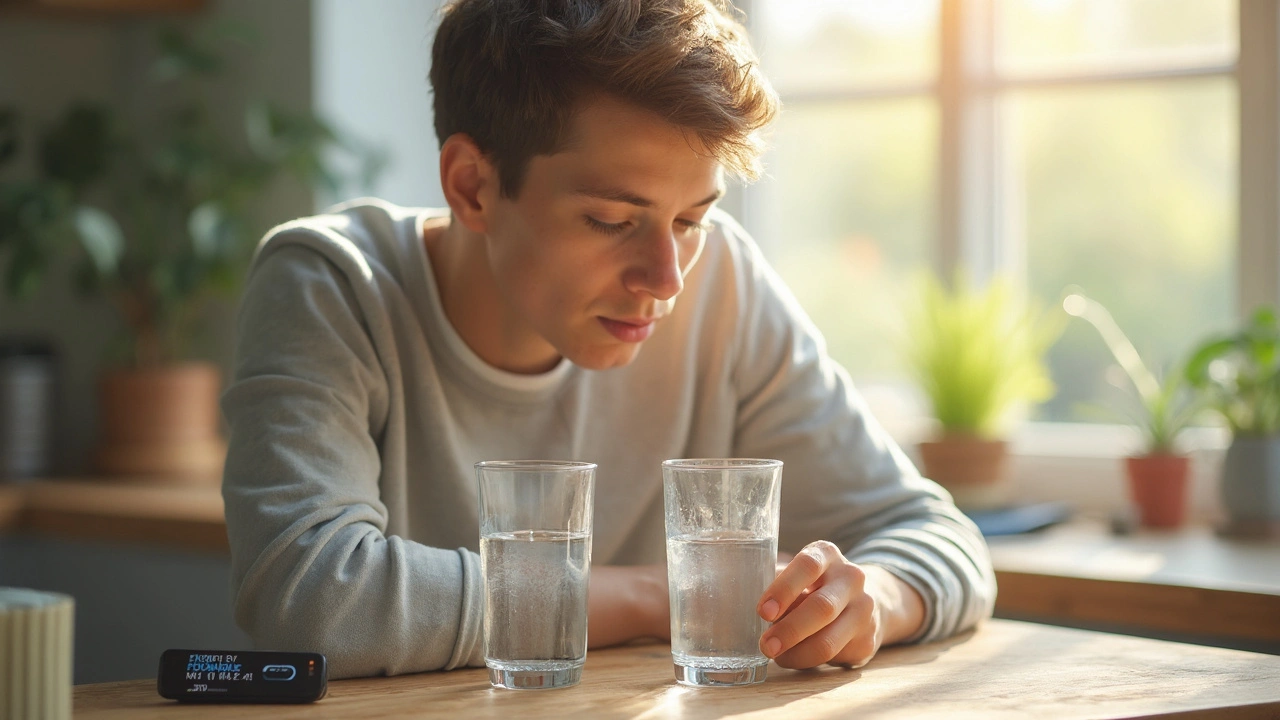Staying hydrated while taking spironolactone isn’t always straightforward—too little water can lead to dehydration, while too much can throw off your electrolytes. Learn how to strike the right balance with specific hydration guidelines, practical tips, and a deep dive into what actually happens when you’re on this common medication. This article covers risks, symptoms, and offers actionable steps backed by recent studies. If you take spironolactone for acne, high blood pressure, or hormone-related issues, here’s what you need to know about daily water intake and keeping your body's balance in check.
Dehydration: What It Is and How to Beat It
Ever feel dizzy, thirsty, or have a dry mouth after a long run or a hot day? That’s dehydration knocking on your door. It’s simply the body losing more fluid than it takes in, and it can happen to anyone – kids, athletes, seniors, even office workers who forget to drink water. The good news? You can spot it early and fix it fast with a few simple habits.
Common Causes and Warning Signs
Most dehydration comes from sweating, urinating, or breathing out water. Hot weather, intense exercise, and fever all crank up fluid loss. Even everyday things like drinking coffee, alcohol, or salty snacks can pull water out of your cells. The earliest warning signs are thirst, a dry tongue, and dark yellow urine. If you ignore them, you might notice fatigue, headache, or a rapid heartbeat. In severe cases, dizziness, confusion, or fainting can show up – that’s when you need medical help.
Simple Ways to Rehydrate and Stay Safe
The quickest fix is to sip water or an oral rehydration solution (ORS). ORS mixes salt and sugar with water, helping your gut pull the fluid into the bloodstream faster. If you’re sweating a lot, add a pinch of salt or a sports drink to replace electrolytes, but keep the sugar low to avoid extra calories. For kids, flavored water or diluted juice works well, but avoid sodas that can actually draw water out of cells.
Preventing dehydration is mostly about habit. Keep a reusable bottle at your desk or in your bag and take a few gulps every hour. Before you head out for a workout, drink 16‑20 ounces of water, and sip again during breaks. On hot days, wear light clothing and seek shade whenever possible. If you’re feeling sick with a fever or vomiting, aim for small, frequent sips of clear fluids – even ice chips can help keep your mouth moist.
Nutrition also plays a role. Foods with high water content, like cucumbers, watermelon, oranges, and soups, count toward your daily intake. Adding a pinch of sea salt to meals can help maintain the balance of electrolytes, especially if you’re active.
When dehydration becomes a regular issue, it might signal an underlying problem such as diabetes, kidney disease, or a medication side effect. Talk to your doctor if you’re constantly thirsty, making a lot of urine, or if you’ve had recent weight loss without trying.
In short, dehydration is easy to spot and fix – drink, replace electrolytes, and listen to your body’s signals. By making water a regular part of your day, you’ll feel sharper, stronger, and ready for whatever comes your way.

